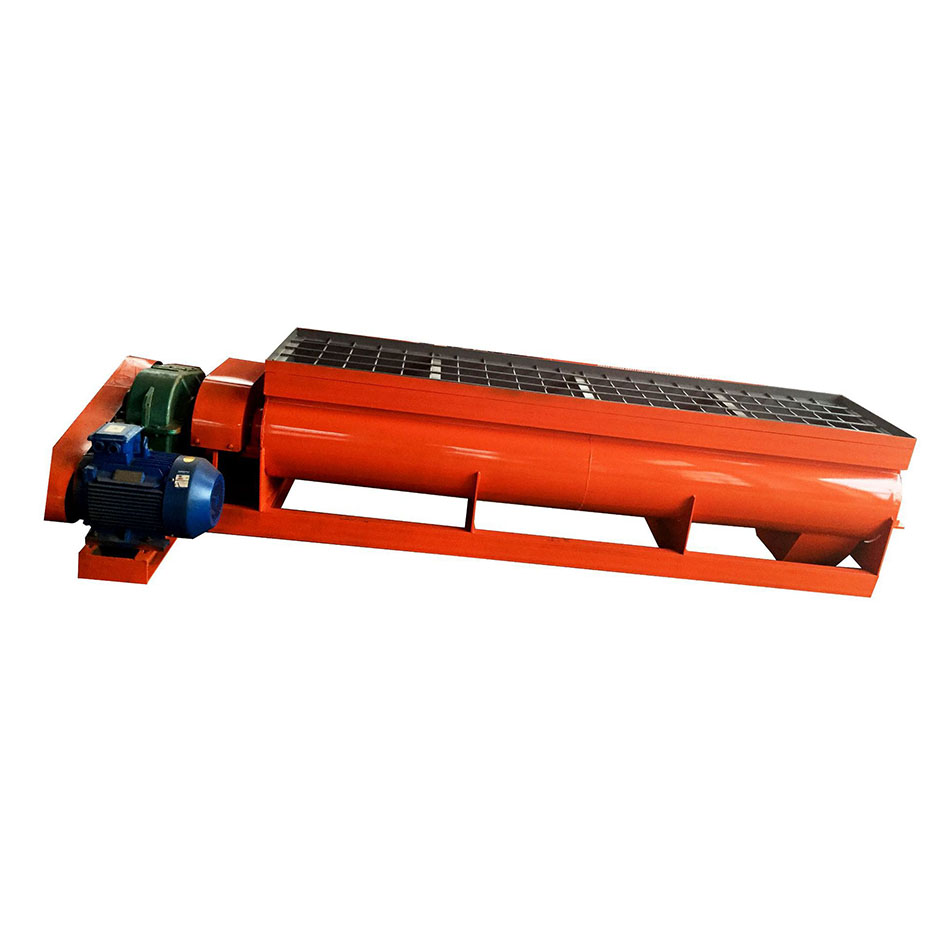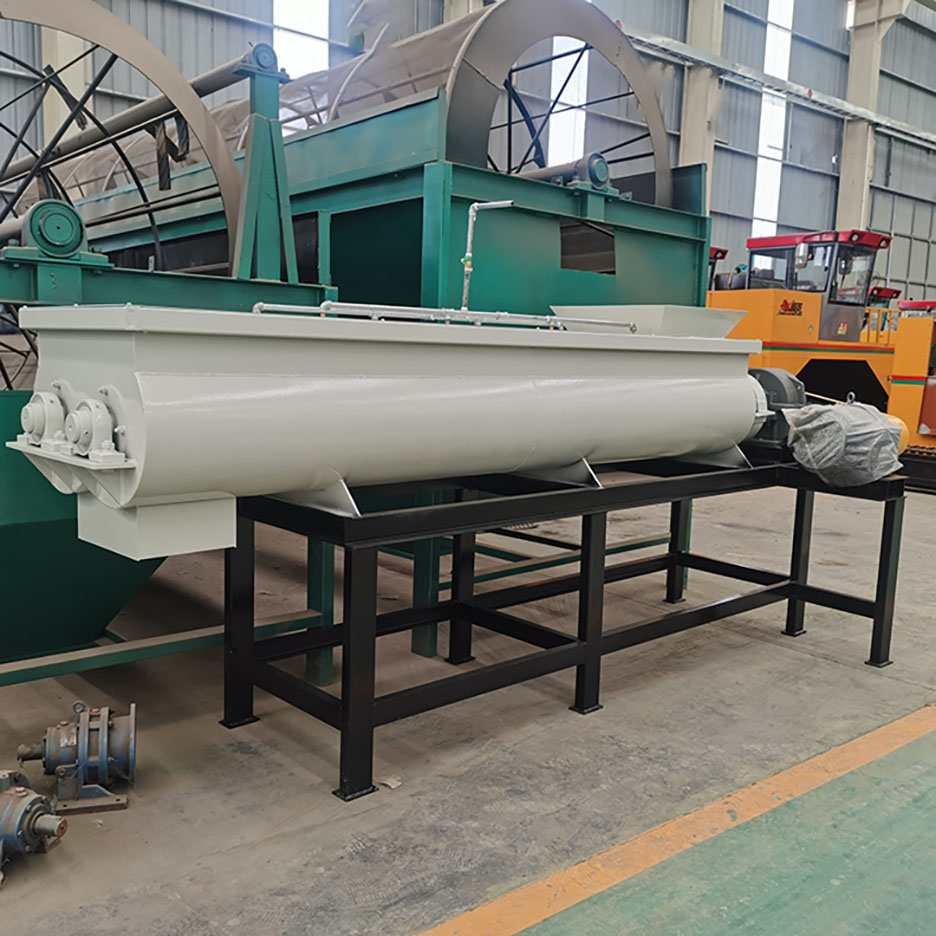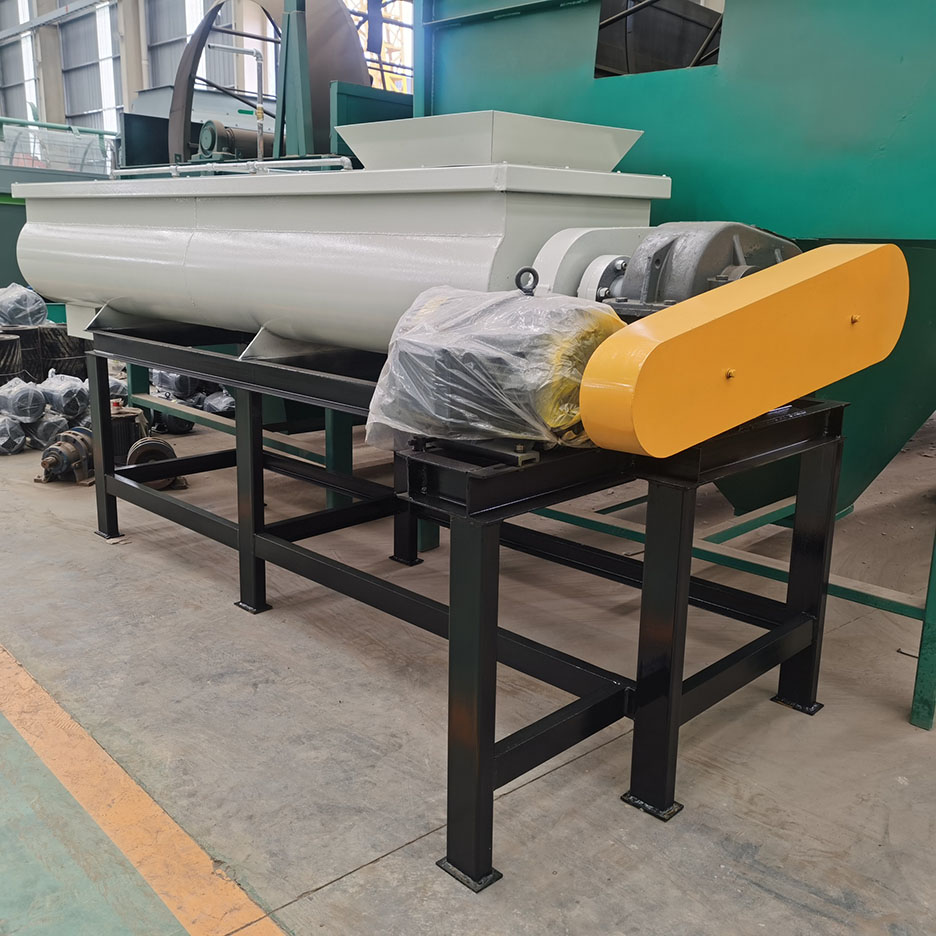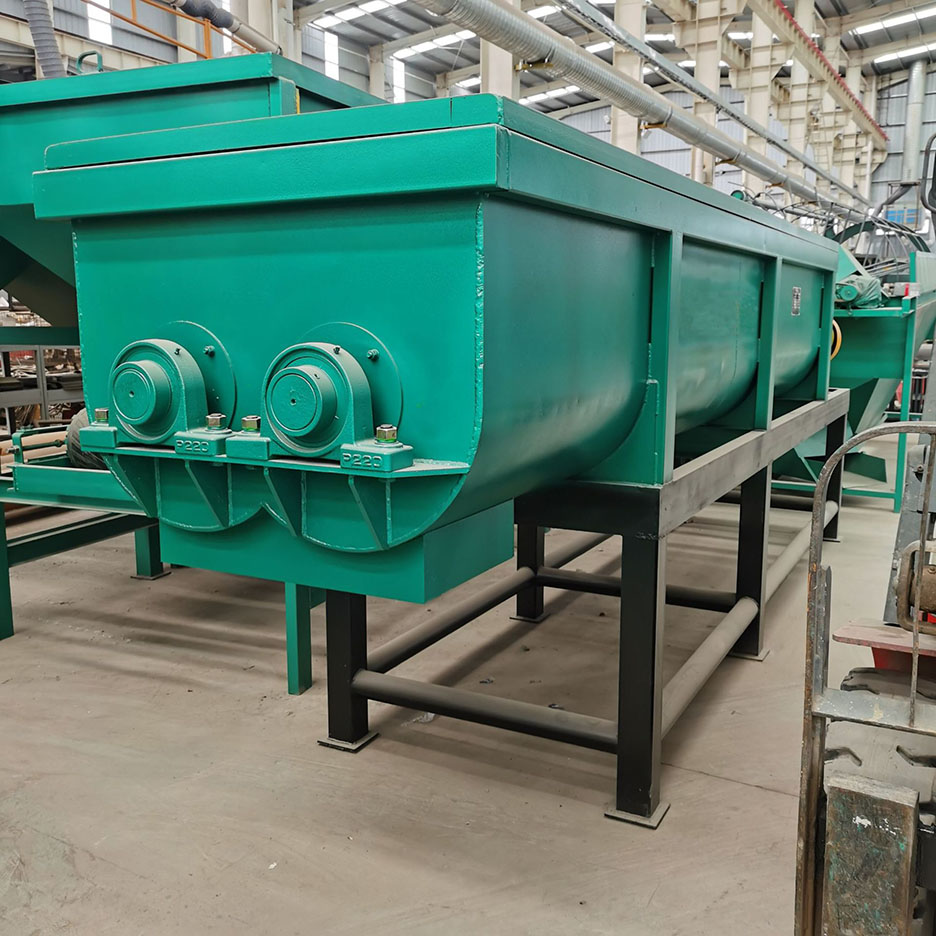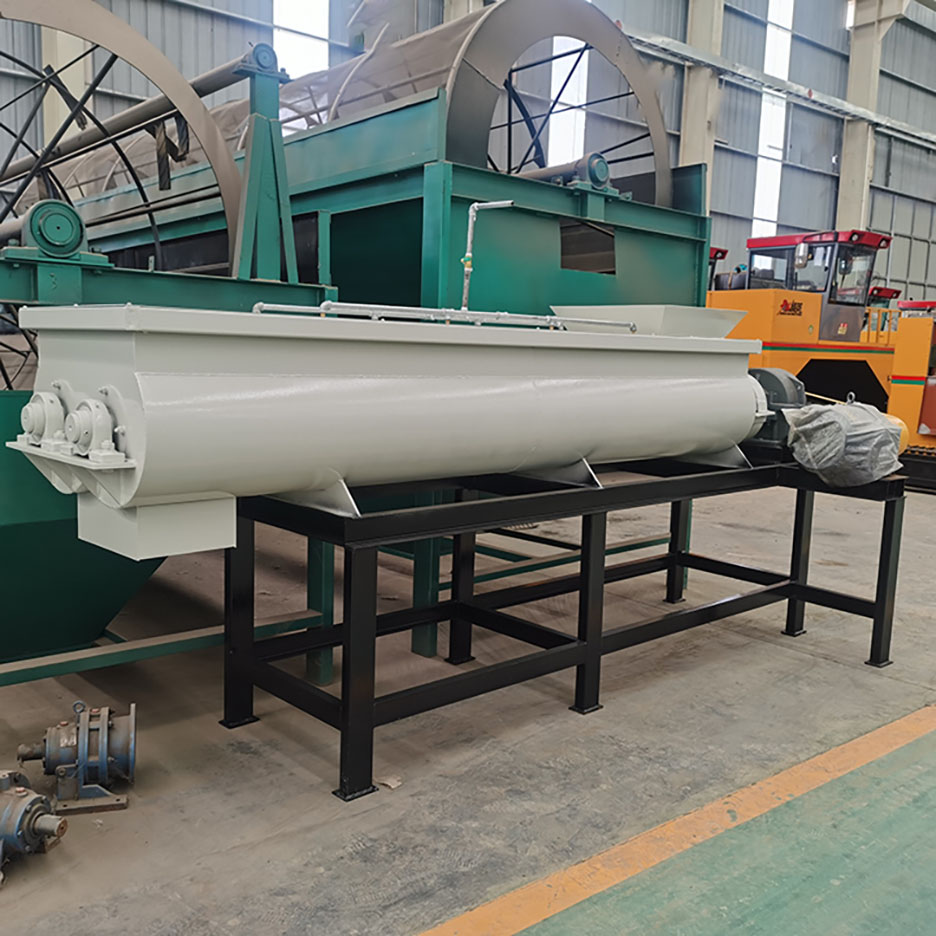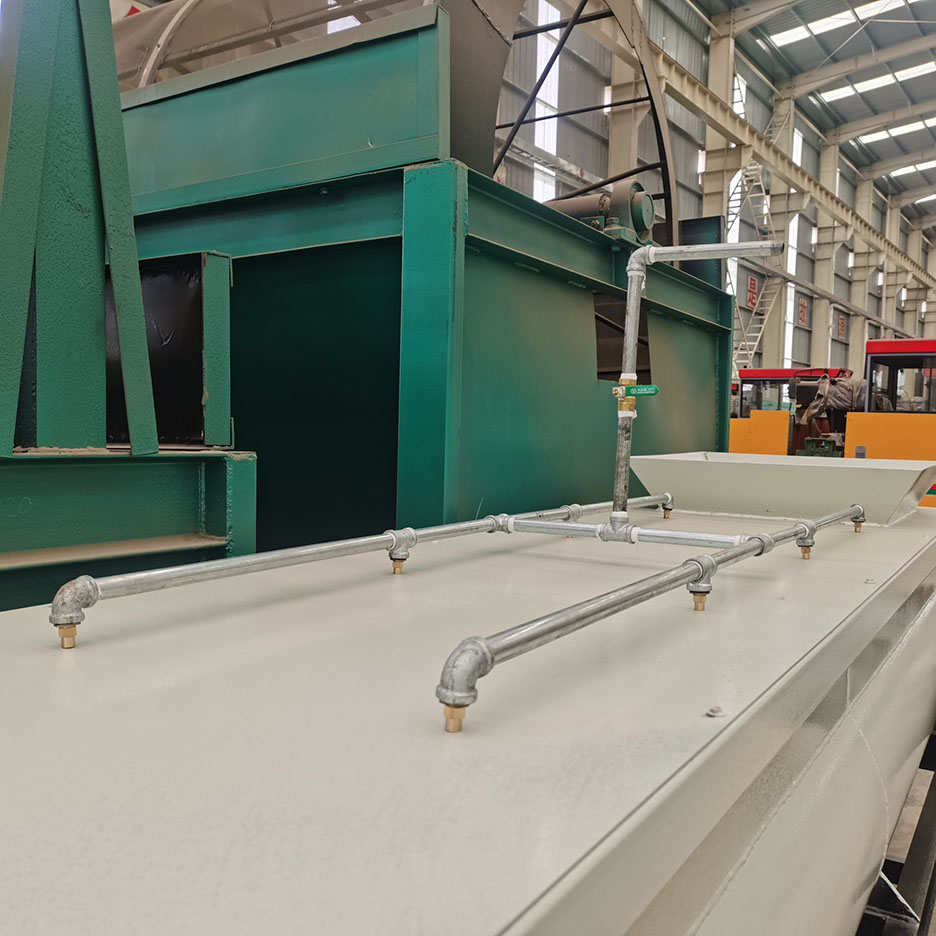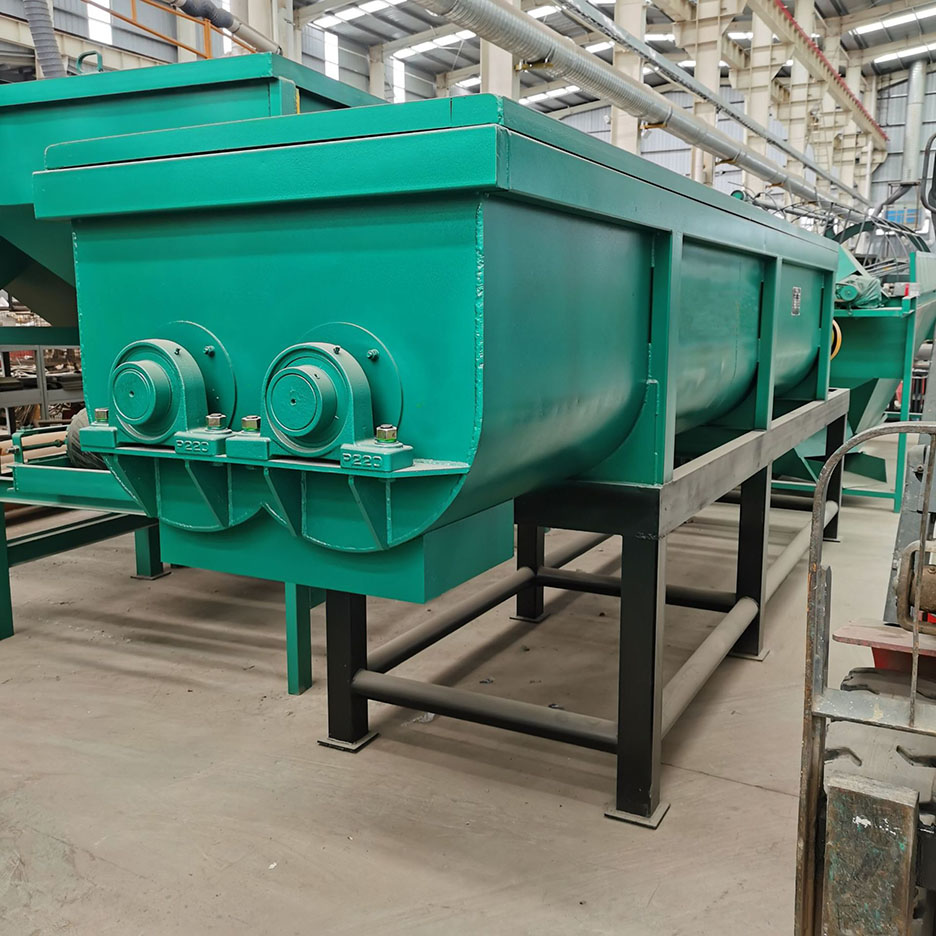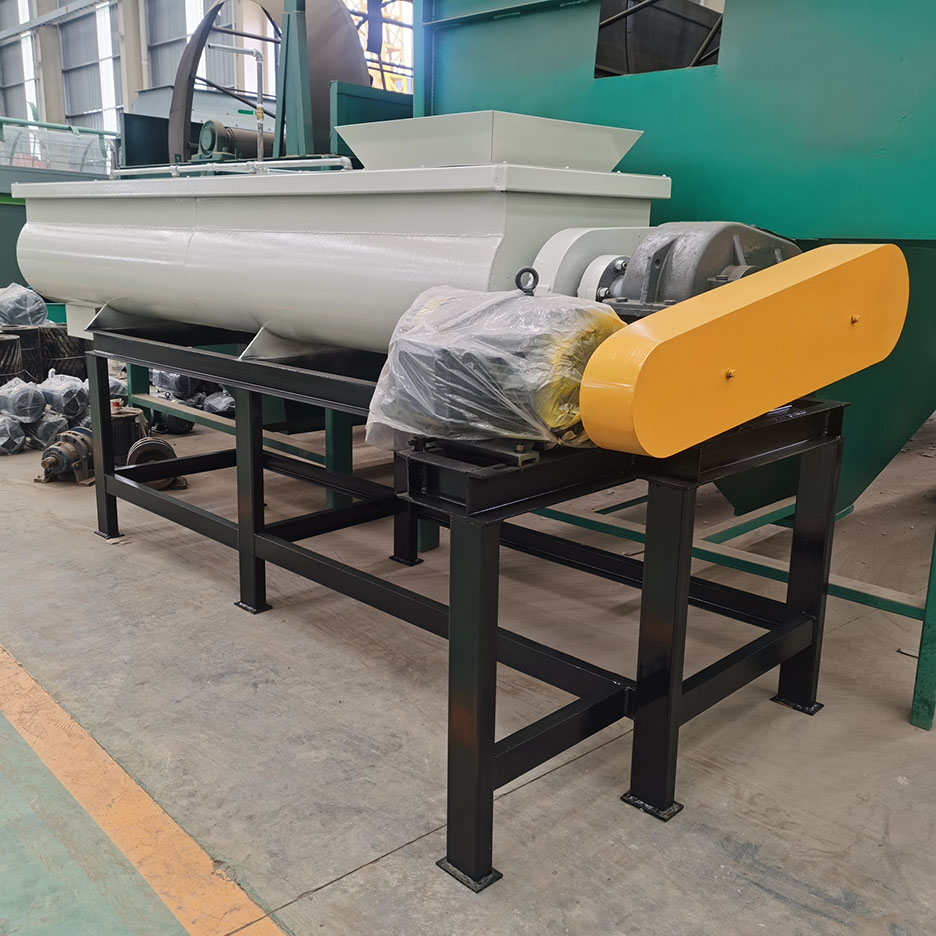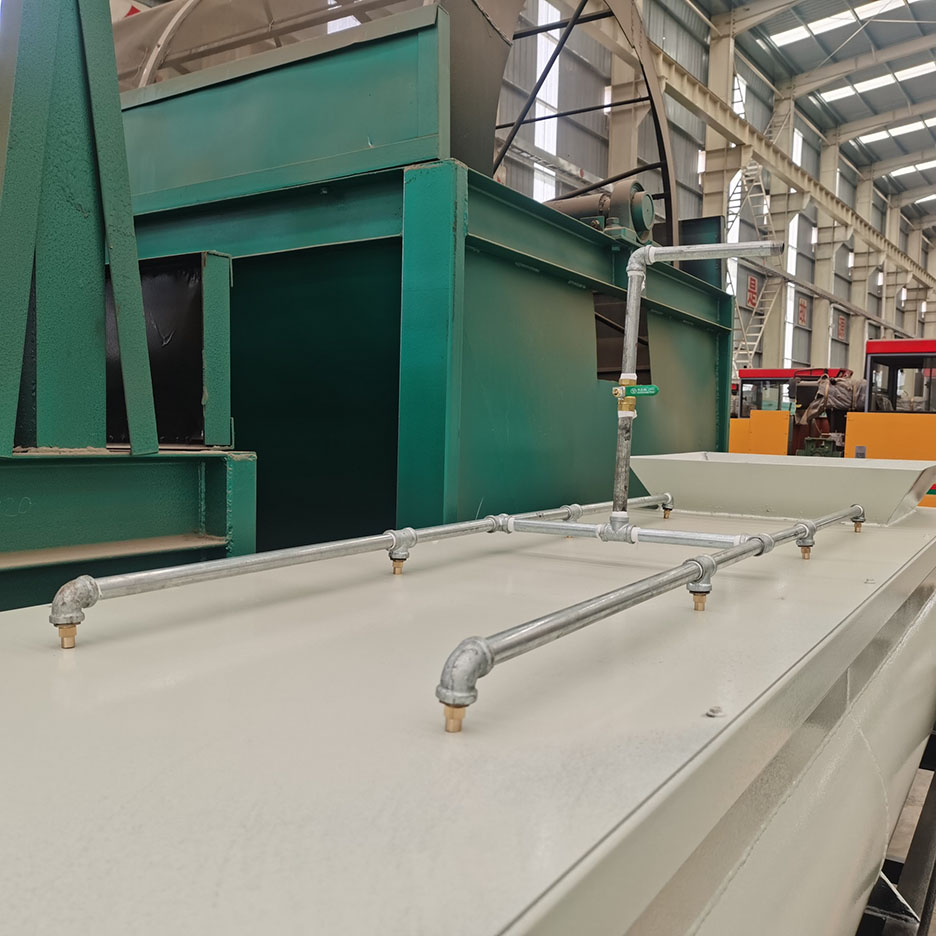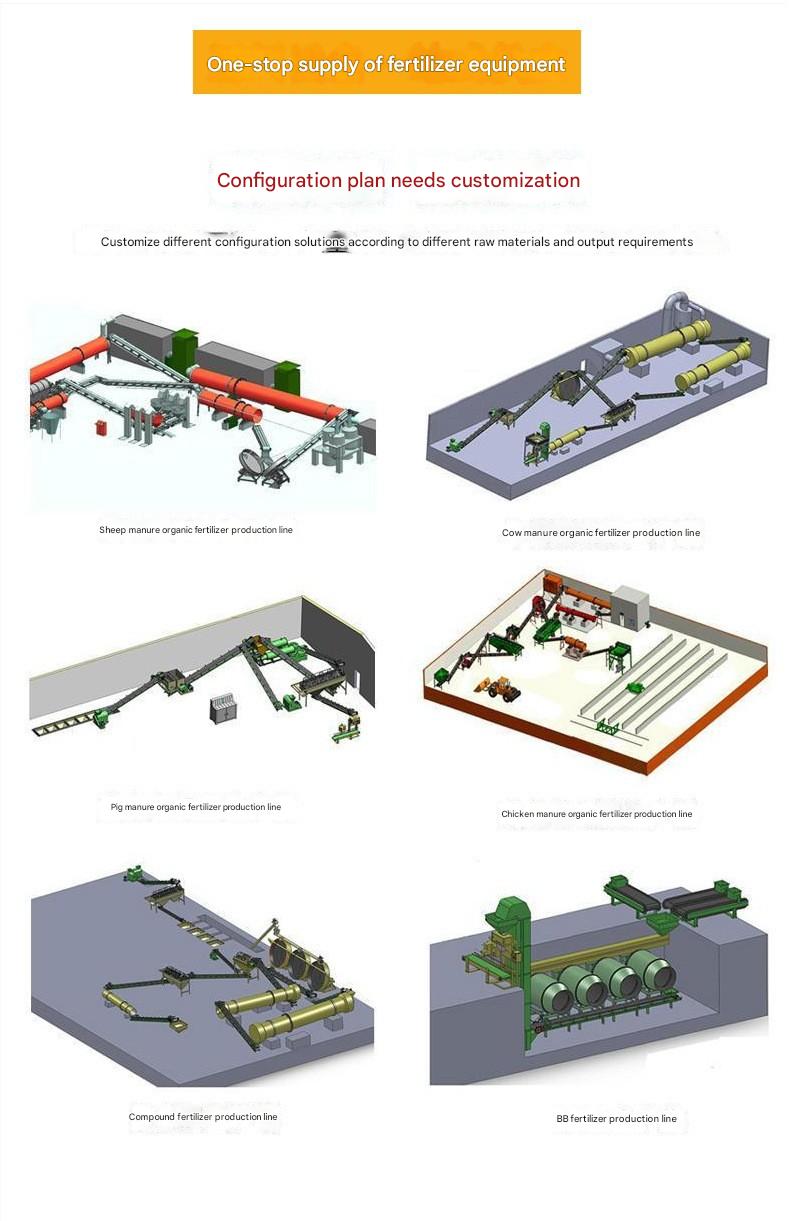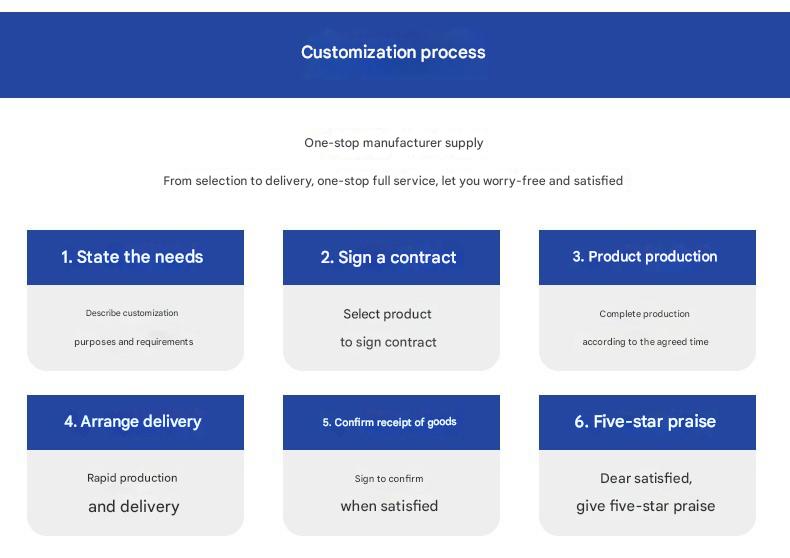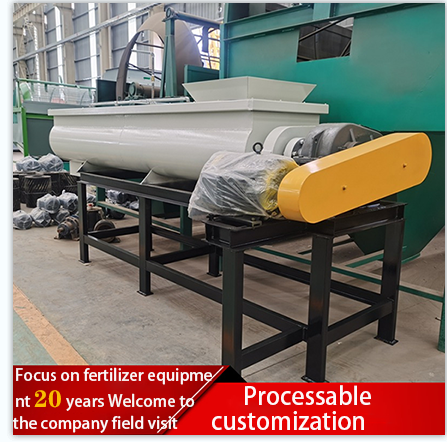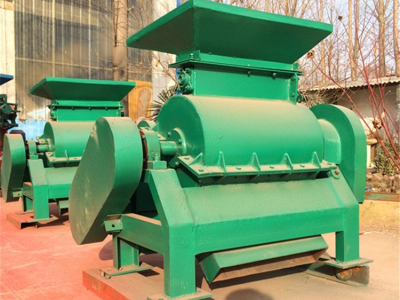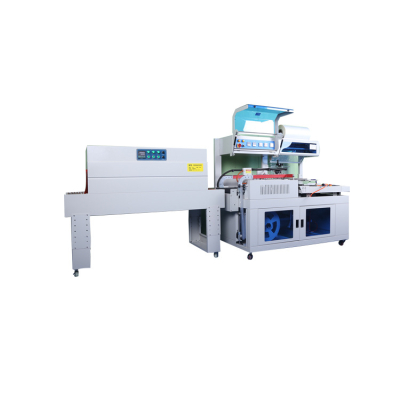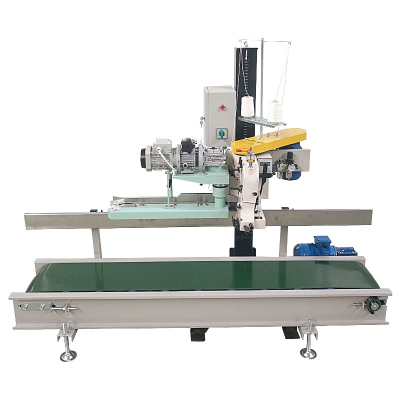Twin shaft mixer
The advantages of the double-shaft horizontal spiral mixer are: extremely stable performance, large mixing volume, good mixing effect, continuous production line production, low noise, simple maintenance, and low cost. It has strong adaptability for the first mixture in the production of briquette; the longer the length of the machine, the better the mixing effect. This machine is a relatively common mixing equipment and can be used in many powder production industries.
Disk mixer: The materials are fully mixed, thus improving the mixing uniformity. The novel rotor structure allows the minimum gap between the rotor and the shell to be adjusted to near zero, effectively reducing the residual amount of materials. The disk is lined with polypropylene plates or stainless steel plates, so it is not easy to stick to the material and is wear-resistant. The cycloid pinwheel speed reducer has the characteristics of compact structure, convenient operation, uniform mixing, and convenient unloading and transportation. The overall structure is more reasonable, the appearance is beautiful, and the operation and maintenance are convenient.
Advantages of double-shaft wet mixer: High mixing efficiency: double shafts rotate synchronously, mixing evenly, small footprint.
Good humidification effect: water spray system humidifies evenly to ensure consistent material humidity.
Easy operation: electrical automatic control system is adopted, which is easy to operate.
Wide range of application: suitable for mixing and humidifying a variety of materials.
The twin-shaft mixer uses the synchronous rotation of two symmetrical spiral shafts to add water and stir while conveying dry ash and other powdered materials, and evenly humidifies the dry ash and powdered materials, so that the humidified materials will not emit dry ash or water droplets, so as to facilitate the loading and transportation of humidified ash or transfer to other conveying equipment. It is mainly suitable for humidifying and loading fly ash or similar materials in thermal power plants, mines and other industries.
The twin-shaft mixer is mainly composed of the casing, spiral shaft assembly, drive device, piping, cover plate, chain cover and other components. The structural performance characteristics are as follows:
1. The shell is mainly composed of plate and steel, which is welded and formed in the manufacturing plant and assembled with other components. It is the support of the twin-shaft mixer. The shell is tightly sealed, and there will be no fly ash or ash leakage.
2. The spiral shaft assembly is the main component of the twin-shaft mixer, and its components mainly include left and right spiral shafts, bearing seats, bearing sleeves, bearing covers, gears, sprockets, oil cups, blades and other parts.
3. The water-adding and humidifying piping is mainly composed of pipes, joints and nozzles. The nozzle adopts a stainless steel atomizing cone nozzle, which is arranged above the inside of the mixer casing and arranged axially along the spiral axis to form a water curtain to facilitate the humidification and stirring of the material. The nozzle has a simple structure and is easy to replace. It is made of stainless steel and is corrosion-resistant and durable. The moisture content of the wet ash can be adjusted by operating the manual regulating valve on the water supply pipe.
4. The cover plate mainly includes a left cover plate, a middle cover plate, a right cover plate, a hole cover and a manhole cover. Six manholes are set on both sides of the twin-shaft mixer to facilitate the operator's routine inspection and maintenance. The twin-shaft mixer is used at the end of pneumatic conveying.
Working principle of the twin-shaft mixer: The synchronous stirring twin-shaft rotation drives the spiral blades to fully mix the materials during the mixing process.
The blades push the material outward from the center, and then reflux from the outside to the inside, circulate back and forth to ensure uniform mixing.
While stirring, the water spraying humidification evenly humidifies the material through the water spraying system to ensure that the humidity of the mixed material is consistent.

